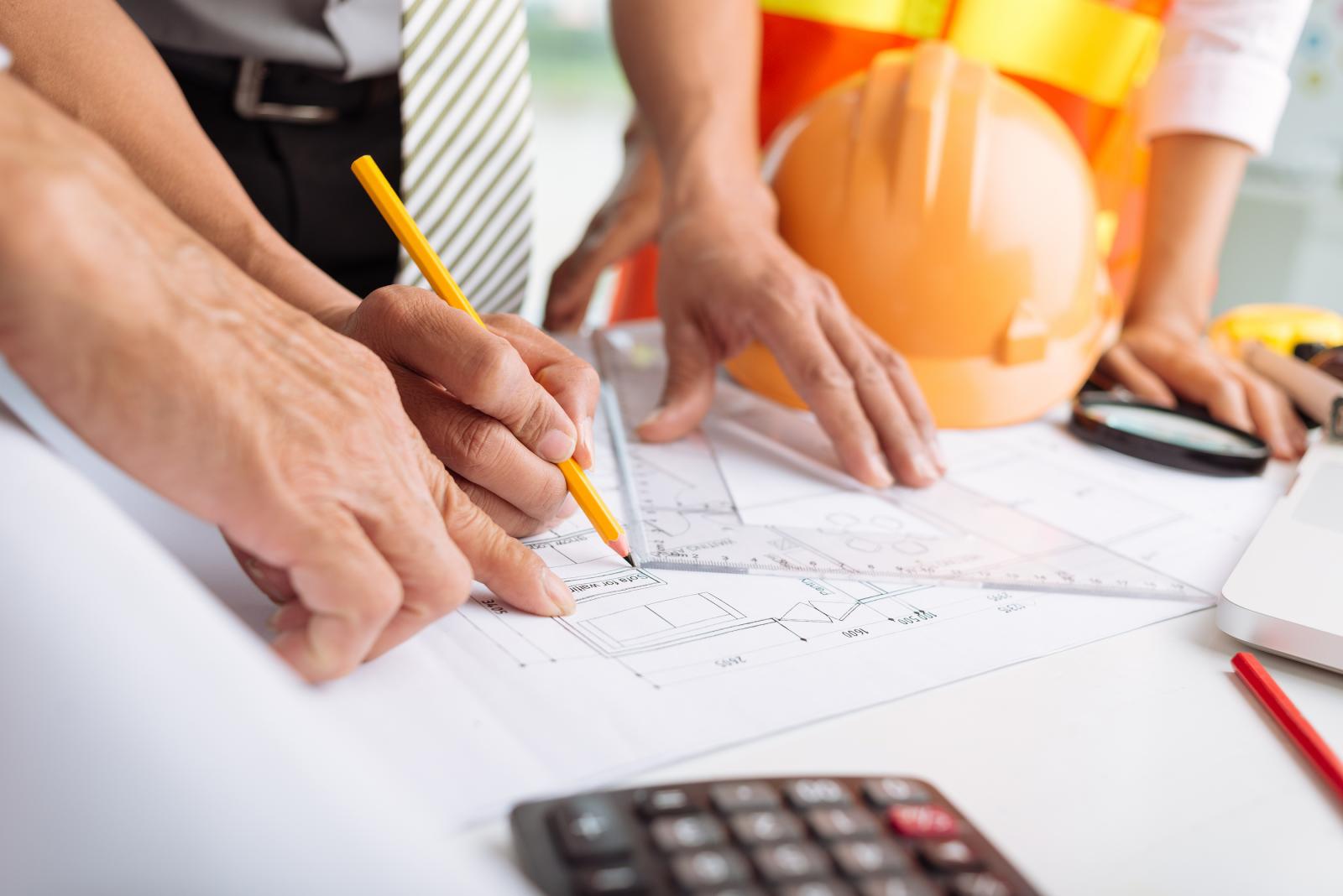Do you need to know: What is a Construction Risk Assessment Checklist? Risk assessment checklists are powerful tools for controlling and mitigating the risks in the workplace as well as a significant part of managing the health and safety of your business.
Bob Trimble is a chartered architect registered with RIBA with 30 years experience in the industry. Trimble Architects work throughout Hounslow, Twickenham, Richmond, Kingston Upon Thames, Teddington and the surrounding areas of London.
Creating a Risk Assessment Checklist for Construction Sites
Creating a risk assessment checklist will allow your workers to be proactive rather than reactive and identify hazards and risks before they pose a problem or cause injury.
Construction site risk assessments reinforce workers responsibility and accountability, and they also promote transparency against operational risks in all working environments. Risk assessments are essential for the health and wellbeing of you, your employees, the public and any visitors to your business.
Risk assessment checklists also allow you to find potential hazards and who is at risk and from what. You can check the current control measures and make any necessary improvements with the information you have documented.
There are many different sectors and industries, from company offices to construction sites.
The checklist below is a guide and is related to many different places of work; however common, a risk is a risk, and a hazard is a hazard whatever your industry, it will ensure all risks and hazards have been assessed and processed.
Risks of Slips, Trips and Falls:
- Are there any loose mats, carpets, floor coverings or rugs?
- Are there any uneven or loose floorboards, paving stones or tiles?
- Can you see any obstructions like loose cables and wires?
- Have there been any spillages of water, oil or other liquids?
- Are there any uneven, steep, worn steps or stairs?
- Are handrails available where required?
- Are paths, car parks, steps and yards well maintained and even?
- Are there any unprotected drops, tree roots or potholes?
- Is there any undergrowth or long grass that needs maintaining?
- How will wet weather affect access routes and pathways?
- Is there adequate lighting particularly for step, car parks, paths, emergency access routes, basements, cellars or stairwells?
Working at Height Risks:
- Are arrangements in place for safety when changing lightbulbs or putting up decorations or hanging pictures, etc., and has everyone been informed about the safety processes and procedures?
- If you have mezzanine floors are any of them unprotected?
- If you have ladders are they being used securely and are they in good condition?
- Do you have any unprotected openings, low-level handrails or high walkways?
Vehicle Movement Risks:
- Will and how vehicles are kept separate from any pedestrians?
- What plans are in place for vehicle movement and to control traffic?
- Will there by car parking stewards in place for the movement of vehicles?
- Are all entrances and exit routes kept clear for emergency service vehicles?
Risks and Hazards of Electricity:
- Are electrical appliances in good working condition?
- Can you see any evidence of temporary wiring or are there any unauthorised electrical appliances?
- Is there any evidence of damaged wiring?
- Have you sourced competent and reputable suppliers to provide all electrical equipment?
Risks and Hazards of Gas:
- Are all the gas appliances in good working condition?
- Do you have a maintenance plan in place for heaters and fixed gas boilers?
- Are all gas cylinders in good working condition?
- Have you made arrangements for the safe storing, use and the changing of any gas cylinders?
Hazardous substances:
- Are all hazardous substances stored correctly, e.g. cleaning materials, pesticides and petrol and in line with COSHH ( Control of Substances Hazardous to Health Regulations)?
- Is personal protective equipment provided?
Food and Drink Risks:
- Do caterers have up to date food hygiene certificates and public liability insurance?
- Do your caterers have the correct experience of the type of event you are putting on?
- Do you have the adequate amount of caterers for the number of people attending your event?
- Have you made aware any non-professional people providing food of the Food Standards Agency guidelines around safe food preparation?
- How will you reduce the risk of scolds or burns from drinks and hot food?
Equipment Risks:
- Has your equipment been sourced from competent and reputable suppliers?
- Is the equipment in good condition and proper working order?
- Is any machinery or equipment set up, monitored and operated by people who have had the appropriate training?
- Has the equipment stored securely?
Manual Handling Risks:
- Have you considered what will need to be moved and by whom?
- Can manual handling activities be avoided?
- Have you provided the correct aids to manual handling, e.g. protective clothing or trolleys?
- Do you require any other specialist equipment for manual handling?
- Have you made the proper arrangements for safe manual handling and have your staff been informed?
Fire Risks and Hazards:
- Are there any accumulations of waste, flammable liquids or combustible materials?
- Are there any heaters or other sources of heat? If you have people who smoke, do you have designated smoking areas, and are they signed?
- Are fire exits and escape routes accessible and well signed?
- Is fire detection and firefighting equipment installed?
- Do you have a devised and communicated evacuation plan in place?
First Aid Emergencies:
- Do you provide first aid equipment?
- Do you have trained first aiders available?
- Has everybody been informed of the correct procedure when dealing with accidents?
The Risks to Personal Welfare and Safety:
- Do you have any lone workers?
- Do any of your employees work when it is dark?
- Is it possible for everyone to raise the alarm to call for assistance if required?
- Can everyone take breaks and access refreshments?
Money Collection and Handling Risks Involved:
- Are there large amounts of cash being collected?
- Who is in charge of cash handling?
- Is there a secure place to collect, count and store any monies?
Other Activities Risks and Hazards:
- Are there any other hazards involved in any activities at the event or place of work, e.g. falling branches, people being hit by golf balls or wildlife mixing with people?
- Have you considered any hazards associated with age and disabilities and the activities involved?
- Are there any risks for women who are pregnant?
- Do you provide disabled access?
- Have you planned for any adverse weather, e.g. snow, extreme temperatures, thunderstorms or heavy rain?
- Have you done all the necessary checks, e.g. CRB checks or previous job reference checks on people responsible for children under 8s or vulnerable adults?
- Do children need any parental permission to attend the site?
- Will any alcohol be on sale at your site?
- Do you have all the relevant licences in place for the event?
- Have you got a plan or procedure in place to manage a major incident on-site, e.g. a bomb threat, site evacuation or death?
Above is an example of questions that are addressed during a construction risk assessment. We created this risk assessment checklist to help site owners understand the concerns that need to be addressed.
If you are thinking of conducting a
construction risk assessment in Twickenham or the surrounding areas of London contact our specialist today.
Bob Trimble is a chartered architect registered with RIBA. Bob Trimble has 30 years of experience working with residential and commercial property projects. For 4 years, Bob Trimble has worked from his housing association and private architectural practice for clients throughout Hounslow, Twickenham, Richmond, Kingston Upon Thames, Teddington and the surrounding areas of London.


